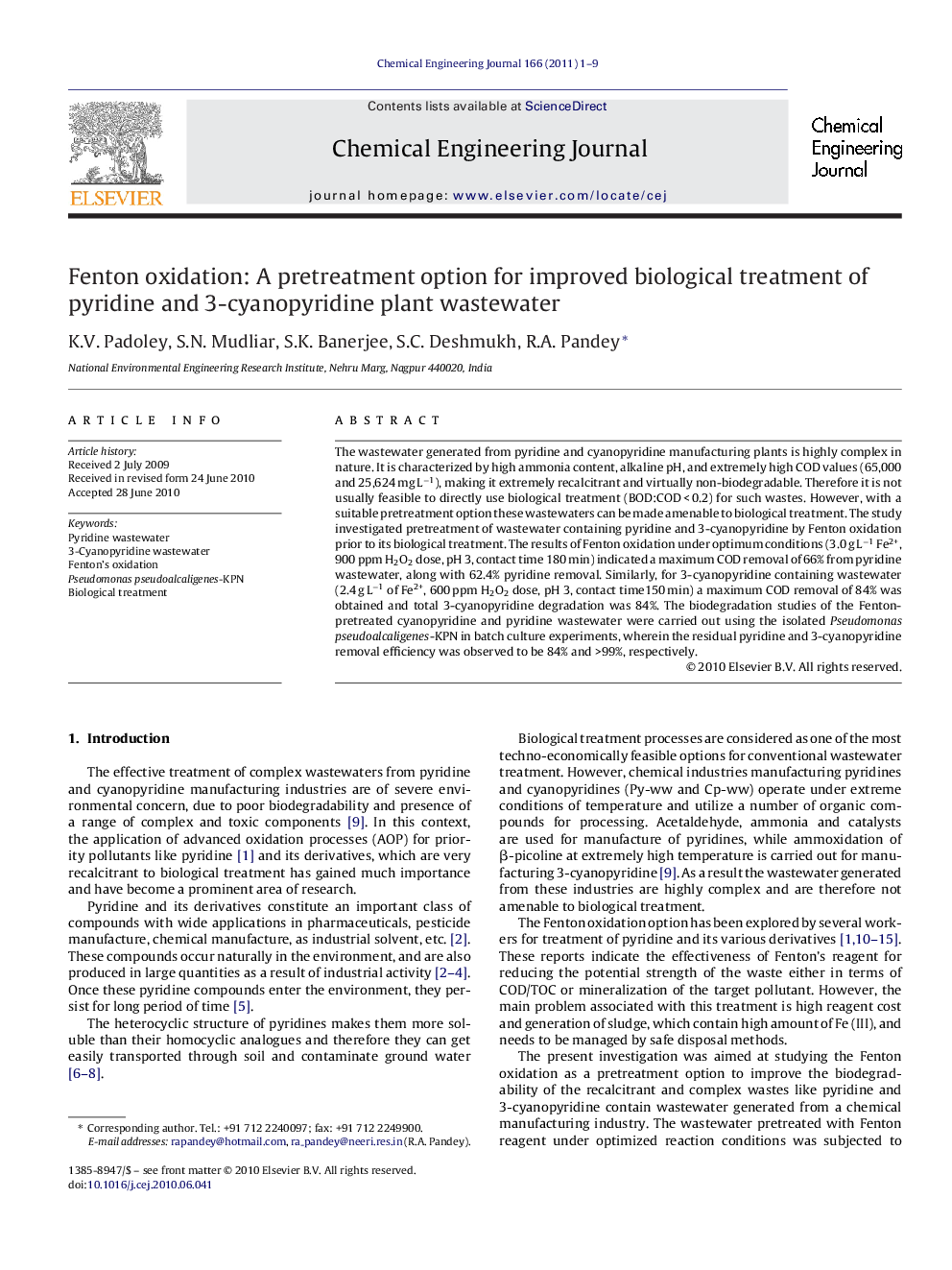| Article ID | Journal | Published Year | Pages | File Type |
|---|---|---|---|---|
| 151761 | Chemical Engineering Journal | 2011 | 9 Pages |
The wastewater generated from pyridine and cyanopyridine manufacturing plants is highly complex in nature. It is characterized by high ammonia content, alkaline pH, and extremely high COD values (65,000 and 25,624 mg L−1), making it extremely recalcitrant and virtually non-biodegradable. Therefore it is not usually feasible to directly use biological treatment (BOD:COD < 0.2) for such wastes. However, with a suitable pretreatment option these wastewaters can be made amenable to biological treatment. The study investigated pretreatment of wastewater containing pyridine and 3-cyanopyridine by Fenton oxidation prior to its biological treatment. The results of Fenton oxidation under optimum conditions (3.0 g L−1 Fe2+, 900 ppm H2O2 dose, pH 3, contact time 180 min) indicated a maximum COD removal of 66% from pyridine wastewater, along with 62.4% pyridine removal. Similarly, for 3-cyanopyridine containing wastewater (2.4 g L−1 of Fe2+, 600 ppm H2O2 dose, pH 3, contact time150 min) a maximum COD removal of 84% was obtained and total 3-cyanopyridine degradation was 84%. The biodegradation studies of the Fenton-pretreated cyanopyridine and pyridine wastewater were carried out using the isolated Pseudomonas pseudoalcaligenes-KPN in batch culture experiments, wherein the residual pyridine and 3-cyanopyridine removal efficiency was observed to be 84% and >99%, respectively.
